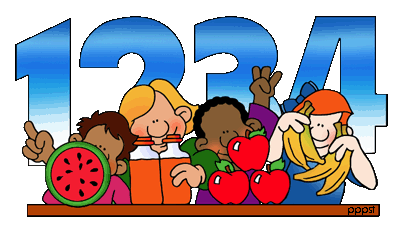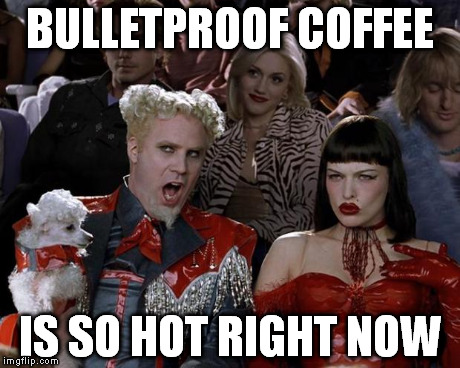What are the advantages to being “peeled”?
There is certainly an advantage to tackling obesity head-on. Ridding yourself of excess body fat will improve all aspects of your life.
After a level of relative leanness has been achieved, the health benefits to continuing to diet for fat loss become more clouded.
Is there an advantage to being a “shredded” 6-7% body fat, as opposed to a more “normal 10-12% body fat?

Likely not. In fact, one could make the argument that you are healthier with a slightly higher percentage rate.
Dieting down into the single digit bodyfat range can be like an “itch” you want to scratch.
Many of our online training clients are in the midst of “rapid fat loss protocols”, as June is right around the corner.
Even if you don’t have a stage to stand on, or a photoshoot coming up, many find enjoyment in the discipline, the persistence, and the pain that this type of regimen inflicts on you.
If you feel the need to “scratch the itch” and get your body fat as low as possible, here are a few tips to make life (a little bit) easier for you.
Tip #1: Count things. (Calories or macros, your call.)
On our coaching inquiries page, there is a question where you must list your biggest frustration with fitness.
The two most common answers are:
- I eat “clean/healthy” and I can’t lose fat.
- I got “lean” but then I stalled out completely.
In both cases, after discussion, it’s found out the person is rarely counting their calories and/or their macros.
It’s kind of easy to go from 25% body fat to 15% body fat (for males). If you eat whole foods, eat more protein and veggies, and stop snacking, you’ll likely do it over time.
At that point, the game changes, though.
In order to continue to progress, it’s time to start counting your calories or your macronutrient consumption.
For exact, specific results, you need an exact, specific protocol.
For your own, exact, specific protocol, take our free fat-loss course.

Tip #2: Eat Less Meals (And No Snacking!)
Even though it’s been debunked time and time again, the “most important meal” zealots still make their voices turn.
It takes a long time for mainstream media to catch up to scientific evidence.
For now, just know that you can eat however many times per day you want in order to lose fat.
Most find eating 2-3 meals to be better for fat loss protocols than eating 5 or more.
You get to eat more food and fill your belly at each meal, which helps compliance and satisfaction.
Plus, to get to low-body-fat levels, you’re counting calories and/or macros, so the less meals you have to make, the less planning you need to do.
The most important part of this equation – to get “all the way there”, there is no “cheating”. You need 100% compliance. No snacking.
Tip #3: Veggies Are (Almost) A Requirement
You can lose plenty of fat by counting your macros and eating nothing but whey shakes, Skittles, and butter.
But you will be hard pressed to “IIFYM” your way into the single-digits of body fat without getting adequate fiber into your diet.
Veggies are your best friend in a diet. They are extremely low calorie and fill up your stomach.
The more veggies you eat, the better your overall dietary compliance will be.
Each meal, fill yourself with:
- Spinach/lettuce/salad
- Carrots
- Mushrooms
- Tomatoes
- Kale
- Onions
- Peppers
- Broccoli
- Asparagus
- Cauliflower
- Cucumber
- Celery
- Zucchini
This will make dieting seem more effortless, and help keep your hunger pangs at bay.

Tip #4: Use Less Stimulants
It’s often advised to use stimulants such as caffeine to help keep hunger pangs at bay.
Many dieters have a Starbucks cup attached to their right hands, morning, noon, and night.
While caffeine and other stimulants can help quiet hunger pangs, stimulants have a heightened effect when you are in a calorie deficit.
Over time, this can cause stress responses, raise cortisol levels, and result in difficulty sleeping.
Cutting back on stimulant usage will actually help you when you diet, instead of hindering it.
Put the coffee on the counter and take two steps back, please.
Tip #5: Fat Is Not Always “Good”
There is a high correlation between people who are frustrated with their diet and people who put butter in their coffee.
It may actually be a causal relationship.

Carbohydrate reduction can be a helpful ally when dieting. Going “low-carb” is how many beginning dieters first find success.
When the weight stalls, naturally, these dieters think the way to continue progress is to slash the carbs even further.
There is a rate of diminishing returns when it comes to cutting carbs. Cut a few carbs, and you’re likely fine. Cut all the carbs, and over time you’ll be in trouble.
Most of those carb-slashers would fare much better if they took a look at how much fat they ate.
Fat has twice as many calories as the other macronutrients. Since it’s now considered “healthy”, most people have no clue they are overeating in such large quantities.
Bring in the reigns on your fat consumption, and you’ll likely reap the benefits.
Tip #6: Fight The Urge To Rest
A funny thing happens as your body fights to preserve homeostasis.
Your body will attempt to conserve energy and calories in the only ways it knows how.
Your body temperature will drop.
You will begin to feel sluggish and lethargic.
You might find yourself having difficulty focusing on tasks.
These symptoms are a natural part of our body’s response system.
In the presence of a lowered intake, your body is telling you to rest so you can preserve your fuel.
You need to fight this urge and get active.
Cut the grass, clean the house, wash the car, and walk the dog.
Staying busy can help take your mind off of food and help you burn a few extra calories as well.
Tip #7: Skip (Or Minimize) All Dressings, Cheeses, or Sauces
You actually can eat a decent amount of food if you eat smartly.
One of the best tips to get lean is to skip all of the “extras” that add calories without providing any stomach filler.
Dressings, cheeses, and sauces rank high on this list.
You can save a substantial amount of calories by making sure these items stay off of your sandwiches, your salads, and your proteins.
Spice up your meals with seasonings, and leave the yummy extras for when your diet is complete.
Tip #8: Choose Your Attitude
Your diet can be grueling, torturous, and awful.
Or it can be a walk in the park.
The choice is yours.
Perception is reality; how you perceive your diet is how your diet will seem.
The dieter’s mindset can help. Here are a few techniques others have found useful:
- Re-framing and checking in
- Finding your freedom
- Altering your perception of stresses
- Minimize your change
- Conquer your lack of motivation
- Avoid silly “social norms” that may be holding you back
But the best piece of advice is to remain stoic and calm when faced with adversity.
Your diet will be over one day. You will make it through.
Say calm and on point.
Ain’t nuttin’ to it but ta do it.
For extra accountability on your mindset, come join our team – apply at [THIS LINK].
Tip #9: Get Sober
This is easily the toughest tip on this list. (At least for me, anyways.)
You are laying off stimulants, you aren’t eating snacks, you are always hungry…….and now you can’t catch a buzz?
Staying 100% sober for an extended period of time is not an easy task for a semi-regular drinker.
You’re about to experience emotions, stresses, anxieties, and insecurities you didn’t even know existed.
You’re also going to experience a higher level of awareness of yourself and your body.
You will be rewarded with a much higher rate of fat loss as well.
If you’re interested in getting as lean as humanly possible, know this:
Yes, it’s a battle of the body.
But it’s more a battle of the mind.
Create your plan, execute, and remain calm.
You can get there.
Hopefully you find these 9 tips useful along the way.
Good luck getting “diced”,
Jason
